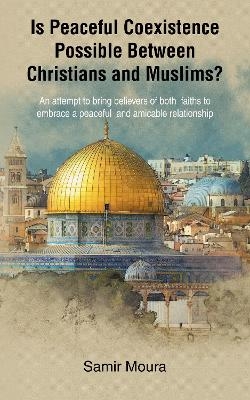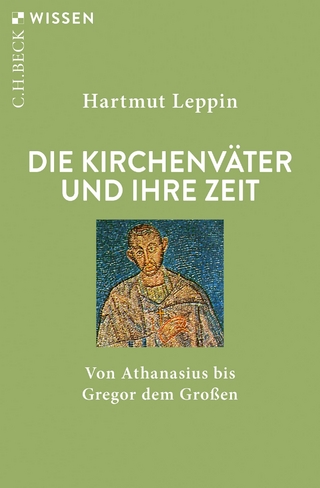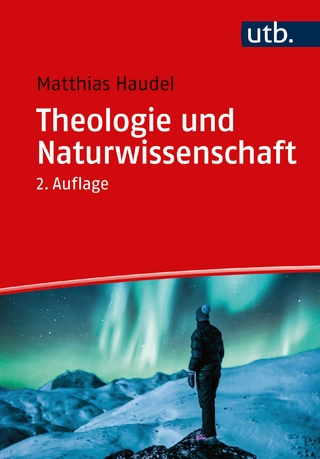
Is Peaceful Coexistence Possible Between Christians and Muslims?
Grosvenor House Publishing Ltd (Verlag)
978-1-80381-216-8 (ISBN)
- Titel nicht im Sortiment
- Artikel merken
The aim of the book is to examine the possibility for Christians and Muslims of different sects to live side by side in harmony, taking into account the considerable development of the society and sciences since the advent of these two religions.
There are many similarities between the Bible and the Quran, as Prophet Muhammad had knowledge of the Bible due to his contacts with the Christian Clergy and Jewish Rabbis. Prophet Muhammad with his logical analytical mind discussed the different interpretations of the Evangels with Christians of different sects and later discussed the Torah with Jewish Rabbis in Yathrib (Medina), and reached certain conclusions that he expressed in a book "revealed" to him in Arabic language where he tried to correct the misinterpretations of the Bible by others, to serve as a guide for his people.
An in-depth reading of the Bible and the Quran reveals the difference in Prophet Muhammad's life in Mecca before the death of his first wife Khadija and her uncle the Arian Christian priest Waraka, when he followed the Christian approach in peacefully calling for the belief in a Single God, lead a monogamous life, and after his migration to Medina where he had as neighbours the Jewish Rabbis. Here the lifestyle of Prophet Muhammad witnessed a deep transformation, thereafter emulating that of Israeli Prophets/kings David and Solomon, in his polygamous marriages and his wars to establish an earthly Muslim Arab State, in sharp contrast with the Heavenly Kingdom preached by Jesus Christ.
In spite of the "improvements" entered into the Quran over those of the Torah, the Quran remains a constitution that appropriated much of its components from Moses Law. Even if the ideas In the Torah and the Quran were inspired by God, the tools who revealed them to mankind were humane, using the reasoning and language expression capabilities of human imperfect persons, the level of their scientific knowledge and the traditions of their societies. They were written with the level of writing skills of their time, mostly from memories, tens and hundreds of years after the death of Moses, Jesus Christ and Muhammad.
Hand copying these scriptures and translating them during centuries, many mistakes must have occurred. The above leads us to conclude that the Bible and the Quran cannot be literally the words of God. Christians and Muslims should strive to interpret the Bible and the Quran basing their interpretation on reason, logic and nowadays scientific knowledge, and where necessary deleting the incorrect insertions.
As we cannot accept many rules of Moses's Law, similarly we cannot accept the Quran's Shari'a Law covering wars of conquest in Allah's name, the notion that the Muslim Nation is the best nation, killing the apostate, payment of tribute by non-Muslims, plunder of women, slavery, polygamy, inequality between men and women in tribunals and inheritance, lashing adulterers, cutting hands and feet.
Ignorance is the main cause of human misery.
The author was born and lived in Aleppo - Syria till his late teens. He completed his Master of Science studies overseas, returned to Syria to work for a Syrian Governmental company, and later for many overseas companies. He met and worked with people from many countries and came to acknowledge that the moral values and ethical behaviour of most of them did not depend on their ethnical belongings and religious affiliations. The horrible human loss of life, human misery and destructions carried out by Al-Qaeda and ISIS (Islamic State in Iraq and Syria), incited me to write this book about what ignorance, greed and fanaticism can achieve, destroying life in whole countries.
Foreword
Preface
Chapter 1: The development of religious thought in the Old Near East
Chapter 2: The Hebrew Bible and the Law of Moses
Chapter 3: The Greeks and their religious beliefs - The Greek philosophers
Chapter 4: Ancient Hindu and Persian religions
Chapter 5: Christianity
Chapter 5. A: The socio-political situation in Palestine during the Roman Period
Chapter 5. B: The life of Jesus and his teaching
Chapter 5. C: The canonical evangels and their writers
Chapter 5. D: The Acts of the Apostles and their Epistles
Chapter 5. E: The Apostles Creed (Testimony)
Chapter 5. F: The spread of Christianity until the declaration of Milan in ad 313
Chapter 5. G: The apocrypha evangels
Chapter 5. H: Christian sects during the first five centuries AD
Chapter 5. I: Christian churches from the sixth until the end of twentieth century
Chapter 5. I. a: Eastern Christian Churches till the Arab Islamic Invasions
Chapter 5. I. b: The Official Roman Church
Chapter 5. I. c: Eastern Christian Churches under Arab Islamic occupation
Chapter 5. I. d: The Pope of Rome and the crusades
Chapter 5. I. e: The Catholic Church Reformation
Chapter 5. I. f: The Monastic Movement in Christianity
Chapter 5. I. g: The diminishing influence of Catholic and Orthodox Churches
Chapter 6: Islam
Chapter 6. A: The Arabian Peninsula and the Hejaz region before Islam
Chapter 6. B: Foreign cultural and religious influences in Hejaz until the sixth century
Chapter 6. C: Prophet Muhammad's life
Chapter 6. D: The main subjects of Prophet Muhammad's message
Chapter 6. D. 1: Verses calling for the belief in Allah, his angels and messengers
Chapter 6. D. 2: The Koran and the New Testament - similarities and discrepancies
Chapter 6. D. 3: Prophet Muhammad's call to the People of the Scripture
Chapter 6. D. 4: Fight against the idolaters and disbelievers
Chapter 6. E: Comparison between the Koran's Sharia Law and Moses' Law
Chapter 6. E. 1: Food and Clothing
Chapter 6. E. 2: Women in Islam
Chapter 6. E. 3: Payers, Ablutions and Fasting
Chapter 6. E. 4: The Sharia Limits
Chapter 6. E. 5: The Zakat (Alms)
Chapter 6. E. 6: The "khums" (the fifth) of the spoils of war and Anfal
Chapter 6. E. 7: Usury (Al-Riba)
Chapter 6. E. 8: Inheritance
Chapter 6. E. 9: Land tax "Al-Kharaj"
Chapter 6. E. 10: The "Tribute" Head Tax on non-Muslims
Chapter 6. E. 11: Slavery and plunder of women
Chapter 6. F: The assembly of the Koran verses in a single book
Chapter 6. G: Are the Koran verses revealed word by word by Allah?
Chapter 6. H: Sects in Islam
Chapter 6. H. 1: Shia Muslim Sects
Chapter 6. H. 1. a: The Zaidy Sect
Chapter 6. H. 1. b: The Twelve Imami Shia Sect
Chapter 6. H. 1. c: The Alawite Sect
Chapter 6. H. 1. d: The Ismaelite Sect
Chapter 6. H. 1. e: The Al-Muahidoun also called "Druzes"
Chapter 6. H. 2: The Philosophical current in Islam
Chapter 6. H. 2. a: The Al-Mutazila school of thought
Chapter 6. H. 2. b: The Muslim Philosophers
Chapter 6. H. 3: The Sunni Muslim schools
Chapter 6. H. 4: The Al-Murjia Sect
Chapter 6. H. 5: The Wahhabi Sect
Chapter 6. H. 6: The Soufi Sects
Chapter 6. H. 7: The Khawarej Sect
Chapter 7: Is Coexistence possible between Christianity and Islam?
Conclusion
References
| Erscheinungsdatum | 28.11.2022 |
|---|---|
| Verlagsort | Claygate |
| Sprache | englisch |
| Maße | 127 x 203 mm |
| Gewicht | 241 g |
| Themenwelt | Religion / Theologie ► Christentum ► Kirchengeschichte |
| Geisteswissenschaften ► Religion / Theologie ► Islam | |
| ISBN-10 | 1-80381-216-8 / 1803812168 |
| ISBN-13 | 978-1-80381-216-8 / 9781803812168 |
| Zustand | Neuware |
| Haben Sie eine Frage zum Produkt? |
aus dem Bereich


